A bill that would give cities across Oregon new powers to lower speed limits without first seeking permission from the State of Oregon has been significantly amended ahead of a hearing and possible vote tomorrow (Wednesday, 4/12).
House Bill 2682 seeks to change Oregon’s rules for setting maximum speeds (ORS 810.180). While the Oregon Department of Transportation (ODOT) doesn’t manage or own most local streets, the agency still controls speed limits. As more cities adopt Vision Zero plans and struggle to respond to an increase in injuries and deaths to vulnerable road users, the City of Portland and local House Representative Rob Nosse led the charge to create this bill. When it was first introduced, the bill was devilishly simple and would have given broad new authority to all cities across Oregon to set their own speed limits without going through ODOT.
Now, as the legislative session heads into crunch time, a major amendment would reduce most of that authority, but also make the bill much more likely to pass.
“Sometimes you start with a concept that’s a little too aggressive. We’ve narrowed the focus of the bill to make it more workable.”
— Rob Nosse, Oregon House Rep (D-Portland)
The amended bill has been almost entirely re-written. The new language restores ODOT’s authority to sign-off on speed limit change requests with a few key exceptions. Here’s the new language in the amended version:
The City of Portland may establish by ordinance a designated speed for a highway under the jurisdiction of the city that is five miles per hour lower than the statutory speed. The following apply to the authority granted under this subsection:
(a) The highway is located in a residence district.
(b) The highway is not an arterial highway.
(c) The city shall post a sign giving notice of the designated speed at each end of the portion of highway where the designated speed is imposed and at such other places on the highway as may be necessary to inform the public. The designated speed shall be effective when signs giving notice of the designated speed are posted.
Advertisement
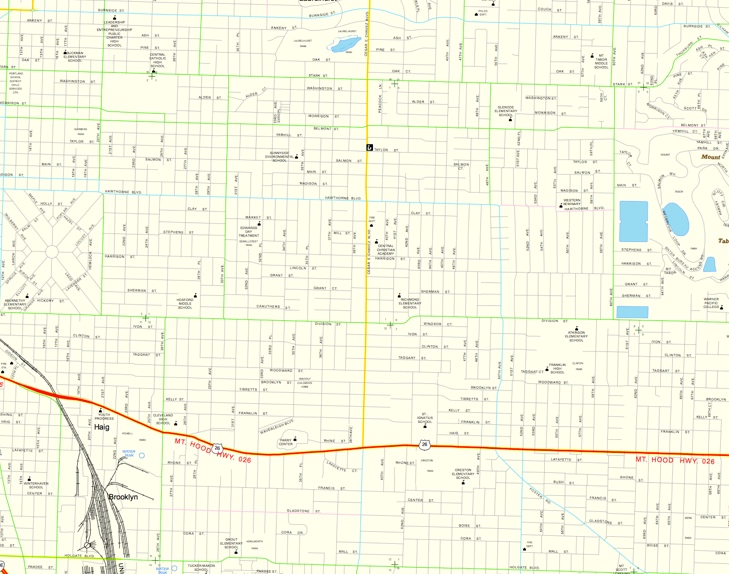
The proposed amendment means the bill would only apply to the City of Portland and could only be used to lower the speed limit by five miles per hour on minor streets that run through residential areas. In some ways this bill would simply be an expansion of the law passed in 2011 which gave the City of Portland the authority to set speeds on neighborhood greenways to 20 mph. That law can only be applied to specific streets where PBOT has installed speed bumps and other features to prioritize biking and walking. If HB 2682 passes, PBOT would be able to lower speed limits on all residential streets regardless of if they are in the neighborhood greenway network or not.
“If this bill passes, we would be able to set the speed to 20 mph on all of our residential streets. In other words, we could implement “20 is plenty” across the city on neighborhood streets.”
— City of Portland
Reached via phone in his office this morning, Rep. Nosse said he’s happy with the compromises in the bill. “Sometimes you start with a concept that’s a little too aggressive,” he said. “We’ve narrowed the focus of the bill to make it more workable.” In other words, the bill was dead and Nosse is doing what he feels is needed to keep it alive.
Nosse added that while Portland is eager for more speed setting authority, other cities and counties didn’t want the legal liability that comes with that authority.
Policy Director for The Street Trust Gerik Kransky echoed Nosse’s sentiments on the proposed amendments. “The bill as written was inoperable from cities, counties, and the states’ perspectives, each with a different take on why it wouldn’t work for administrative and/or functional reasons,” he shared with us via email this morning. Kransky said the difference in safety between someone driving 25 and 20 miles per hour on a residential street is “significant.” “I think this bill will save lives if we can get it to pass.”
PBOT says despite the new language, they’d be “very happy” if the bill passes. “Currently the statutory speed for residential streets is 25 mph. If this bill passes, we would be able to set the speed to 20 mph on all of our residential streets. In other words, we could implement “20 is plenty” across the city on neighborhood streets. The bill would also make it easier to drop speeds around schools.”
In written testimony submittted to the committee yesterday, southeast Portland resident Marsha Hanchrow expressed her disappointment with the changes in the bill. “No spine remaining at all,” she wrote. “Portlanders have been killing each other with vehicles in increasing numbers lately, and the easiest, cheapest, and most sure way to slow or stop the carnage is to slow vehicle speeds. Please allow the city to determine the allowable speeds for city roads of all categories.”
While the bill wouldn’t apply to Portland’s meanest streets like Division and Powell, PBOT has other tools available to lower speed limits on those streets. They recently reduced speeds on SE Hawthorne Blvd and SE Division.
The public hearing and possible vote on HB 2682 is scheduled for tomorrow (4/12) at 8:00 am in the House Committee on Transportation Policy. If you’d like to submit written testimony you have until 12:00 noon today to email it to htp.exhibits@oregonlegislature.gov (put House Bill 2682 in the title).
(Note: The Safe Routes to School bill, HB 3230 will also get a public hearing at that same meeting.)
— Jonathan Maus: (503) 706-8804, @jonathan_maus on Twitter and jonathan@bikeportland.org
BikePortland is supported by the community (that means you!). Please become a subscriber or make a donation today.


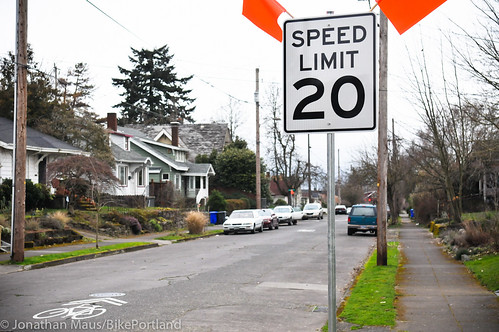
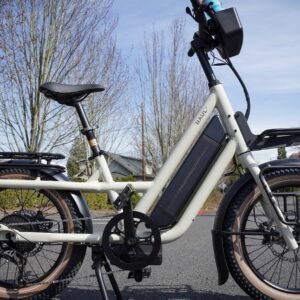
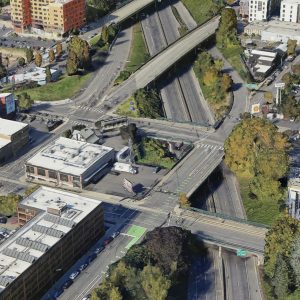
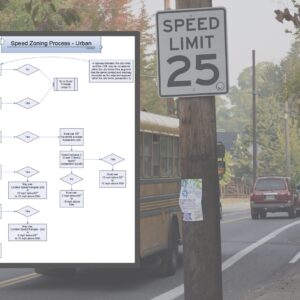

Thanks for reading.
BikePortland has served this community with independent community journalism since 2005. We rely on subscriptions from readers like you to survive. Your financial support is vital in keeping this valuable resource alive and well.
Please subscribe today to strengthen and expand our work.
What about PBOT’s authority to restrict or divert traffic? What law requires an “arterial highway” to exist at all?
The classification labels used are Federal Functional Classifications.
Can’t emphasize enough: this bill was considered DOA as of just two weeks ago. The amendment weakens it quite a bit, but it’s still a step forward. Please submit testimony! If you don’t like that the amendment weakens the original bill, you can always mention that in your testimony (emphasize that your concern is for PBOT specifically to have control over speed limits within Portland boundaries; there was some concern that every town in Oregon would suddenly be responsible for setting–and any consequences from–their own speed limits). If this bill (even with the weaker language) dies in committee, it will make it that much harder for legislators to propose future bills of this nature.
I just called Rob Nosse at (503) 986-1442 to express my disappointment with the amendment.
I also emailed htp.exhibits@oregonlegislature.gov to express my support for the bill.
All: please consider doing the same right now.
So, you prefer nothing to something? All or nothing positions rarely succeed.
Lives are at stake.
Nice headline!
Thanks for the call for testimony !
I want to thank Representative Nosse for proposing this bill and working to keep it alive. As a constituent I am very pleased with his efforts to help make Portland’s streets safer and more livable.
_____________________________________________________________
A major difference is that this amended bill only applies to Portland:
“(11) The City of Portland may establish by ordinance a designated speed for a highway under the jurisdiction of the city that is five miles per hour lower than the statutory speed. The following apply to the authority granted under this subsection: “(a) The highway is located in a residence district. “(b) The highway is not an arterial highway. “(c) The city shall post a sign giving notice of the designated speed HB 2682-2 4/3/17 Proposed Amendments to HB 2682 Page 6 1 2 3 4 5 at each end of the portion of highway where the designated speed is imposed and at such other places on the highway as may be necessary to inform the public. The designated speed shall be effective when signs giving notice of the designated speed are posted.”.
https://olis.leg.state.or.us/liz/2017R1/Downloads/ProposedAmendment/10093
Sadly, the original bill would not have applied to Powell since it is under ODOT jurisdictional control. We need to push Portland’s commissioners and the mayor to take jurisdictional control of all high crash corridors even in the absence of full ODOT funding.
Outer Division could be fixed by reducing it to one travel lane in either direction. That would probably have a greater impact on pedestrian safety than lowering the speed limit.
Lame. Limiting it to the city of Portland removes my neighborhood streets from consideration.
Discuss that with your elected officials.
My elected officials believe in housing development and faster roads above all else. The commissioner from my district supports lower speeds and sidewalks, but he’s in the minority.
Outer Woodstock too. Cars driving 40-50mph through a street lined with homes because it is zoned 35mph is outrageous.
I like the idea of being able to set sensible speed limits, but I’m not a fan of blanket low limits despite the fact that I live close to and often travel roads where I believe the highest safe speed is 15mph or less and rarely even hit that myself. 20 is more than plenty for many streets but there are also plenty where 25 is very reasonable.
Low speeds improve safety when people are going too fast, but I’m not convinced it improves safety when they were already traveling at a reasonable speed. It can reduce gaps/visibility as things get more bunched up, introduce distraction incentives, it increases speed differentials between the scofflaws and everyone else, and it encourages cyclists to ride in vehicle blind spots for extended periods of time.
Speed limits that obviously too low also provoke resistance to speed limits — including reasonable ones.
Weak… There are streets that need the speed lowered to 25 or 20 in some areas. These streets should be considered residential streets, but are now at 30mph. NE Fremont is a great example. It is not considered a business district, not considered residential, but lined with schools, businesses, sight-obstructing parking, a large park, frequent ped crossing and enough residential density that it should be considered residential.
SD,
Fremont is either residential or business, those are the only ORS labels available.
The statutory business limit is 20 mph, and PBOT is crafting policy to move on that, as it demonstrated with SE Hawthorne.
Statutory residential is 25, so five under would be 20 mph.
NE Fremont is Local or Urban Collector, so the portions in residential districts would qualify under this law change.
That would be great if it happens. The way I read the article was that if a street is currently at 30mph it would not be affected by this legislation because it is not residential.
Nope. 30 is not a statutory speed, but says nothing about the district in which the street is situated.
20 is plenty!
Does anyone have a link to see ODOT classifications for Portland’s streets? I found this one, but it looks different than the excerpt Jonathan posted. I am hopeful that a a lot of streets I would like to see speed reductions are classified as Collectors and would become under PBOT’s jurisdiction.
https://www.oregon.gov/ODOT/TD/TDATA/gis/docs/citymaps/Portland.pdf
The way I read this, it only takes effect where speed signs are posted. To apply city wide, there would have to be speed signs set up on every single little residential street in the city. I doubt the city is going to do that. Doesn’t that alone make this pretty ineffective?
That condition would be onerous.
‘signs notifying’ absent of the ‘each end’ portion would permit Portland to change those dozen signs as you enter, instead of every local street.
Welcome to Portland. Speed Limit 20 mph Unless Otherwise Posted.
changing the ‘and’ to ‘or’ would also work.
“…is imposed or at other locations…”
Sounds super realistic.
Remember what happened when they passed a law making all school zones 24×7? This would be like converting most of the town into a school zone. Few people (including cyclists) will putz along at 20 where that is clearly too low.
Since when do people driving cars ‘clearly’ recognize the dangerous nature of their behavior? IMO, most people need to be disabused of the notion they can ‘feel’ the right speed to drive.
If you can’t sense an appropriate speed to drive or bike, you don’t belong on the road. Judgment is an integral part of driving and cycling.
You may be right, but the concept that at least 85% of people, when left to their own devices, will drive at safe speed underpins conventional engineering practice. I’ve always been skeptical that this is true in practice.
I have mixed feelings about the idea that people do fine left to their own devices. I’ve certainly seen cases where it’s true but I’ve also seen cases where it’s absolutely false.
Where it’s absolutely false, the signs didn’t appear to have any impact on behavior.
Despite the fact that I’m on a bike and advocate caution, I exceed the posted speed limit every day in some areas when there is no ice as this poses no threat to anyone. However, I go slower than other cyclists when I think this is appropriate. For example, most cyclists pass pedestrians too close and fast pretty much everywhere peds and cyclists share space — especially on the bridges. But there are also sections of street that call for low speeds.
20mph is simply ridiculous in many places. Compliance will be virtually nonexistent, and since this blog contains a number people who openly advocate being scofflaws, I won’t feel bad about being a speed scofflaw. I’ll even put in extra effort where the low limit is especially inappropriate. My experience with cops right behind is that they won’t stop a bike no matter how far over the limit you are so long as you’re in full control and can respond.
People go too fast in many places. Sometimes, an excessive legal speed limit is part of the cause and that should be corrected. But the mechanism needs to make sense. Gumming up he whole town doesn’t qualify.
In NYC, they have a citywide 25mph limit, except where posted otherwise (school zones, freeways, etc.). The new proposal would require a speed limit sign on every block of every residential street in town. In most places, that means one every 200 feet. Could local neighborhood associations be allowed to place signs as long as they’re in locations mandated by the city? In New England and Virginia, guide signs (including route markers) can be installed and maintained by the city as long as they’re in locations mandated by the state and adhere to Fedeal sign standards. Putting up speed limit signs in residential zones under such an arrangement could be a win-win thing. This could apply to ped/bike signage, too.
Some people already do this.
I’d be careful about letting neighborhoods put up signs. Everyone wants every sign, speed bump, etc just outside their place but wants free movement elsewhere. If people start believing the signs they see are anything other than totally official (i.e. activists put them up), it could cause people to systematically disregard all of them.
JL,
Something is better than nothing. the original bill would not have made it out of committee.
Also, contrary to the map caption, all the grey, pink and green lines in the Federal Functional Classification System are non-arterials. Any non-arterial in a residential district could be reduced from statutory to five under statutory.
None of the other streets are off limits from the traditional speed limit reduction process, and PBOT has about a 95% success rate for such speed reduction requests.
FWIW I think we need some clarification around which streets this could be applied to. Nosse said it couldn’t be used on Division, even though Division is a green line on the map.
Inner Division is collector, outer Division is Arterial, not sure where it changes.
Yes for PBOT’s classification, but ODOT uses the “functional classification system” not the TSP, so many of those roads may still be listed by ODOT as “arterial.”
My reference was FFCS. PBOT doesn’t use the term Arterial.
Hmm…paikiala is correct that “arterial” is only the highest classification of street (think Sandy or MLK), so lots of busy streets that are “collectors” should be eligible. However, it talks about “residence districts”, and I have no idea what that means.
Okay, I just looked it up. Residence District is any stretch of road that is residential rather than a business district. That makes sense because PBOT is already allowed to reduce speeds in business districts. So this would allow PBOT to reduce speeds by 5mph along both local and collector streets outside of business districts. “Arterial” has a specific definition under Oregon law, as does “Collector” and “Local.” This bill only mentions “arterials” as an exeption, so “collectors” are eligible. Jonathan, you should probably update your post to clarify unless I’m missing something.
business districts are already eligible for 20 mph speed limits.
Thanks Beeblebrox,
Here’s what Rep. Nosse’s Chief of Staff just shared with me after I asked him to clarify what streets the bill would impact:
ODOT maps page:
http://www.oregon.gov/ODOT/TD/TDATA/Pages/gis/citymaps.aspx
Portland map:
http://www.oregon.gov/ODOT/TD/TDATA/gis/docs/citymaps/Portland.pdf
A very useful resource, thank you for the link.
According to several maps, ODOT classifies the following East portland streets as “arterial”:
N-S: 82nd; 102nd/Cherry Blossom/112th (Sandy to Division); 122nd (Marine Dr to Foster); 148th; 162nd; 181st/182nd in Gresham; I-205. But not 136th nor 174th, nor 111th/112th south of Division.
E-W: Foster (+ 50th); Jenne; Powell; Division east of I-205; Stark; Glisan; Halsey; I-84; Airport Way. But not Marine Dr, 4M, Harold, Holgate, Flavel, Prescott, nor Burnside.
Leave a little earlier. Have been babysitting sis-in-law’s car (we don’t have one) and note that I’m a far more patient driver than I ever used to be. There’s no reason in the world we need license (i.e. higher speed limits) to get places faster faster faster in cars. Just leave more time. Leave earlier. Go slow. SO much more good comes from quashing our (drivers’) existing sense of entitlement to get where they’re going fast and without impediment. We need humility.
Sigh. I am not super enthused by this bill anyway. I just don’t see this having much of an affect on enforcement.
How often do you hear of ANYONE getting speeding tix?
Parking?
Certainly.
As I’ve stated before on this forum, the PPB annual report indicates that the Traffic Division has about 50,000 interactions per year. That’s only 140 per day. Meanwhile motorists drive over 9 million miles per day. That works out to one traffic stop per 70,000 miles drive. That’s basically zero chance of getting stopped. There is essentially no enforcement.
To have an interaction at all, there has to be reasonable suspicion of some infraction. Not all of those nine million miles driven are done so in an illegal manner, so not all of them would be eligible for an interaction to begin with. That makes the one-in-70k number a red herring. What you want is number of interactions per mile driven illegally.
A full coverage network of automated enforcement would solve both problems at once.
Imperial Directive 204.c: To meet our critical security needs, it is imperative that all Citizens be tracked and their movements monitored.
…which given many people’s inclination to have the gps units of their phones operating and the highly prevalent use of third-party tracking software, is remarkably easy to do. It’s probably already being done.
I believe that tracking cell phone locations without a warrant is illegal. Scanning license plates is not.
I would object less to increased automated traffic enforcement if routine collection and retention of license plates also required a warrant.
I’m all in favor of a mandatory 20mph speed limit for any road near a school, daycare, park, playground or other area were kids are found.
There are kids on every single street. For some reason, people worry about them only in very specific locations
And you seem to worry about them nowhere.
Hardly.
I advocate common sense everywhere. That achieves much than reactive focus on a few tiny areas which can cause even worse problems elsewhere.
I might add that one of the reasons I harsh on cyclists as often as I do is that too many refuse to recognize that they are a threat others — especially small kids — when they travel at unsafe speeds on MUPs or barrel past the ends of cars, corners, or any other area where their sight lines don’t give them ability to react.
I am for ticketing drivers and cyclists when they hit children who ‘appear out of nowhere’. I am for 20mph speed limits in all residential neighborhoods. I am for extending school zones to cover the main walking routes to school (rather than just a block or two in either direction). Are you?
I am in favor of sensible speed limits everywhere and in ticketing whoever disobeys laws or exercise poor judgment. People need to drive speeds based on potential for kids or others to be harmed regardless of what the sign says and should be ticketed for driving too fast for conditions if that is appropriate.
However, I am opposed to speed limits based on knee jerk criteria. 20mph is appropriate for roads where sight lines leave little reaction time for people/cars/bikes/whatever darting in from the side. However, it is not appropriate where no such potential exists.
I propose that in addition to residence districts and school zones, the speed limit be 20 mph on any street where on-street parking is allowed. Want to drive faster? We’ll have to remove the parking (and leave it a wide outside lane or replace it with a a bike lane).
This is a great idea! I’d love to drive faster on your street, so let’s remove your parking! On my street, I want both parking and slower speeds, so we have a win-win there as well.
Well, thank goodness you don’t get to decide for everyone!
Cars going zero mph gum up movement and block vision lowering the speeds that the street can be safely navigated by bicycle as well as by car.
It’s one of the major reasons I avoid these places even when cycling.
I may have triggered something that got my comment moderated out. My short answer is no.
I favor ticketing anyone who is driving/riding too fast for conditions. People need to operate at speeds based on potential for kids and others to be harmed regardless of what the sign says.
20mph is appropriate for roads where sight lines leave little reaction time for people/cars/bikes/whatever darting in from the side. However, it is not appropriate where it’s easy to respond in time.
But the issue is moot as such a one-size-fits all solution is too impractical and unenforceable to ever happen. Which is good since I doubt it would improve safety overall.
Why is the rest of Oregon left out?
Because other cities apparently didn’t want the liability of being able to change the limits. (It’s mentioned in the article if you read further down.) Although why it’s written only for Portland and not written as “any city that opts into this section by…” instead, I can’t guess.
because this bill was deader than a doorknob when it applied to all of oregon. (contact your rep to complain.)
Brett,
We sometimes forget/take for granted that City of Portland has some of the best engineers and planners not just in Oregon but in the entire country.
In other cities, especially smaller ones without such experienced staff, they might not be able to make decisions about street speeds with as much authority or analysis as PBOT. This rigorous engineering work is crucial to make good decisions — decisions that will hold up both in the court of law and the court of public opinion. If something happens on one of those roads and a citizen files a lawsuit, cities could be more open to legal liability if a lawyer could say, “Look at this very bad decision made by City XYZ.”
a.k.a. “with great power comes great responsibility”
So.. smaller cities would be at risk to legal liability because they don’t have the capacity/experience/expertise/tools to properly utilize the authority the original bill would grant. PBOT has all that, so it makes sense for PBOT to get the new powers.
Hope that helps clarify.
p.s. And yes, because of the reasons above, the bill was DOA.
Sorry. It doesn’t take expertise to lower a speed limit. Sure design is part of it but lowering speed limits outside of Portland won’t result in a spike in road deaths and injuries. It is another instance where Portland gets to experiment because legislators know that Portla re more open to experimenting. But that doesn’t mean that these things shouldn’t be applied statewide.
There seems to be an underlying assumption in many responses that most trips are for trivial reasons and that people only need to go short distances for work, shopping, business, volunteering, recreation, etc.
This is simply not true for many if not most people. I do as many cycling utility miles as anyone, and I oppose blanket measures to slow everything down. If this isn’t even a good sell except for a certain brand of cyclist, how can it ever succeed against the vast majority of people who drive or businesses that have a stake in this?
Slowing everything down will have unintended consequences.If you make it too hard for people to move through, the logical thing for them to do is start tearing down neighborhood streets that can’t be policed, where sight lines are terrible which threatens peds, kids, and everyone else.
Gumming things up causes spacing to get tight between everything which blocks vision while simultaneously encouraging erratic movements for turns and other maneuvers since people know their next chance might not be for awhile increasing hook, cross, and t-bone opportunities.
Speed limits really too high in some areas. But these should be tackled on a case by case basis rather than going for a quick simplistic fix.
Slower traffic has a few irrefutable benefits:
1. Trees can be planted closer intersections. More trees=cooler streets, cleaner air and cleaner rivers.
2. Slower traffic is better for businesses
3. Slower traffic is safer (at least less fatal)
4. Slower traffic is a component that can help promote alternative transportation including transit, bike share, biking, and walking
All of those benefits are true under the right circumstances. The right circumstances are not the same as all circumstances and there are many places where it is an outright detriment as well as being unworkable.
A blanket plan is a nonstarter with all but a tiny percentage of the population who cannot imagine needs that fall outside a narrow range are legitimate.
You may have missed some talking points. Here’s a good reference: https://www.motorists.org/
It’s clear you cycle..but probably not a true cyclist. And..that’s ok. Not everyone is..and not every can be.It’s a sacrifice to be a true cyclist, you will lost friends and be considered a “loon” sometimes. We understand.
That’s an odd statement. No one who knows me could doubt my cycling bona fides, yet I am quite sure I have never lost a friend (or acquired an enemy) because of it, and, while some may think I’m a loon, it would be for reasons completely unrelated to my riding. I also can’t think of anything I’ve sacrificed because I ride.
I’d echo HK’s sentiments.
Until I moved to PDX, I have always been “that guy” — to the extent that total strangers would introduce themselves to me on the street and in stores. Even in PDX, I am somehow unusual as I ride roads and conditions that few will touch.
I feel there is only gain to cycling and have sacrificed nothing. Can’t say I’m aware that it’s ever caused me issues with anyone, including those who hold generally negative views of cyclists.
Your assertions really need some empirical data to support them. The benefits of lower speeds are well-supported. Your fears about lower speed limits “gumming” things up lack plausibility.
When speeds drop, throughput falls. Why is it implausible that reducing speeds would increase congestion (i.e. “gum things up”)?
I wonder how much of a drop in speed it takes to actually reduce throughput. As Kyle notes, “spacing gets tighter” when speeds slow down. Driving at a particular speed requires a particular amount of space around a car. Oh, crap—I can feel my slide rule vibrating in its holster…
Alright. So let’s assume a three second rule (I know, ha!) for following distance and an average car length of 16 ft (the rounded-up length of a Toyota Camry @ 191″), and let’s further assume that traffic is “free-flowing”, with no signals or other impediments, and then let’s imagine standing on the side of a street and watching cars go by for one minute.
Following distance @25 mph = 36.66 fps x 3 sec = 110 ft.
Length of car + buffer @25 mph = 16 + 110 = 126 ft.
Following distance @20 mph = 29.33 fps x 3 sec = 88 ft.
Length of car + buffer @20 mph = 16 + 88 = 104 ft.
So the “effective length” of a car @20 mph is 22 feet shorter than the same car @25.
Now, let’s count cars + bufferses for one minute:
25 mph = 2200 ft/min; 2200 ft/min / 126 ft/car = 17.46 cars/min
20 mph = 1760 ft/min; 1760 ft/min / 110 ft/car = 16.92 cars/min
So the actual difference in throughput between 25 mph and 20 mph traffic looks like about half the length of a car + buffer, only 10% – 15% of which length is actual car, so depending on when we start our one-minute stopwatch, the actual number of cars going past has a good chance of being the same.
Even with a 2-second following distance, the difference in (car + buffer)/min is only 1.06.
One second following distance results in a difference of 2.93.
It is left as an exercise for the reader to determine the effects of larger speed changes, or changes within a higher range of speeds, e.g., 35 -> 30.
Surprisingly, engineers have worked out all the equations; you can base your calculations on the formulae and concepts below. You can tell this is Civil Engineering and not Chemical Engineering because there are lots of sigmas (ChEs use more integrals). The curve in 7.3 basically says it all… except what the value of u is.
https://www.civil.iitb.ac.in/tvm/1111_nptel/512_FundRel/plain/plain.html
What?! Somebody already did this? Well, I wasted 10 minutes then. At least I showed my units.
Showing your units gives you instant cred in my book.
Hey SD!
I know this is confusing and you think you need data to help you understand this, but for an empirically minded individual like yourself, I might suggest a simple experiment.
Try sitting at a street corner and counting the number of vehicles that pass in 5 minutes. Do this several times when the road seems full of vehicles and compare how many go by when they’re going different speeds.
The curious thing is as vehicle speed approaches zero, so does the number of vehicles that pass. As a practical matter, this means that rush hour traffic not only moves very slowly, but very few cars get through.
This same principle also applies with bikes. However, cyclists fit through much tighter spaces than cars so faster ones can often pass the cars and slower cyclists. That’s why cycling is more fun.
To paraphrase “Slowing speed limits 5-10 mph leads to people tearing down neighborhood streets, blocks vision, encourages erratic movements for turns and increases hooks, crosses, and t-bones?”
This conjecture would have to be backed up with something before I would take it seriously.
Drivers do all of these things, but they do it to avoid long lines of stopped cars, which is more of a function of the number of cars, merging zones, stop signs and lights, etc.
For something that you’d take seriously, I’d suggest riding a bit more.
My average utility mileage since the early 80’s averages well in the thousands, I did over 10K utility miles per year for over a decade, and I’m sure I still regularly ride conditions and mileage only a few here will touch.
I’ll be blunt. There are some excellent cyclists in the PDX area, but by and large, the drivers are decent and the cyclists have the worst habits I’ve seen of anywhere I’ve ridden. Which is saying a lot.
If you don’t agree, try actually riding someplace out of this tiny fish bowl or other tightly controlled environments because I know you haven’t. Don’t even think of riding outside a few bubbles in the Willamette Valley. It won’t end well.
Congrats on being so awesome. I was wondering how your magnificence was related to this thread, but then I realized it is related to every post.
I think you incorrectly nested this post about me under Kyle’s message. My Magnificence forgives you.
When I drive 20 on a neighborhood street vs driving 25, I don’t notice any of this ‘gumming up’ that you speak of. I do notice more of the neighborhood though.
The “gumming up” is behind you!
In reality, it all depends on the traffic flow; in many cases, 20 vs 25 will cause no change in effective capacity. For the record, I support a 20MPH limit on the type of residential street common in NE and SE Portland.
Precisely.
Within certain parameters, slowing things down has no effect on throughput — reduced speeds can even lead to increased throughput when the reduction results in smoother movement.
I also believe that even 20 is too high for many streets that technically have a 25 limit though I would observe that most people go quite slowly on these streets as they should.
I’m personally a fan of predictability, rather than speed or throughput. As long as users are predictable and move within a certain range of speeds and turning movements in certain specific areas, traffic flows, be it by car, truck, walking, bike, or tricycle, then I agree with having sometimes higher speeds. Even the Dutch advocate for freeways and expressways in certain, limited circumstances, with higher speeds, for through movement, but with slower more predictable movement in commercial areas and in high-density neighborhoods.
The gumming up you speak of only happens when by a driver behind me is driving faster than me. That occurs on every single lane road no matter what the speed limit is.
It sounds like you answered your own question.
I must be getting ahead of myself then, because I haven’t asked a question. Yet.
I see you phrased your question as a statement in a brilliant reversal of the Jeopardy phrasotype. A brilliant culture-jam for which you should be congratulated.
Keep in mind, it does take a police force to actually enforce a mph limit on side streets.
I pretty much drive 20mph on my own residential streets…much the tailgaters chagrin.
Cross-posting from http://www.BikeLoudPDX.org ‘s email list: